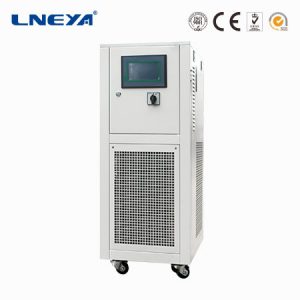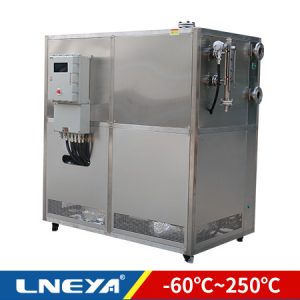Heating and cooling system for chemical reaction kettle reaction process
In the process of chemical chemical reaction, material temperature is an important production process parameter. For example, in salt crystallization, solution separation, organic pigment and intermediate processing, temperature control is particularly important. In order to achieve this goal, the reaction kettle is directly refrigerated and cooled, so as to achieve the purpose of indirectly reducing the temperature of the materials in the reaction kettle. For this reason, it is urgent to adopt suitable refrigeration equipment to lower the temperature of the reactor.

The heating and cooling system in the reaction process of the reactor is mainly used for cooling and cooling of the chemical reactor (chemical heat exchanger), and timely takes away the huge heat generated by the chemical reaction to achieve the purpose of cooling (cooling) and improve the quality of the product. The main heating and cooling system of the reactor reaction process is also called the chemical water chiller and the reactor water chiller, which are widely used in chemical and pharmaceutical industries.
In chemical production, because of the large refrigeration capacity, some tens of thousands of kcal per hour, there is a large demand for low-temperature refrigeration. The rate of most chemical exothermic reactions in the reactor cooling system will increase with increasing temperature and decrease with decreasing temperature. If the reaction temperature is lowered, the reaction will slow down, and the unreacted materials may accumulate in the reactor.
During the reaction, the temperature rises again, and the unreacted materials may start to react. If there are enough unreacted materials, the heat released by the reaction may exceed the cooling capacity of the reactor. In the selection of chiller equipment, chemical industry practitioners should pay special attention, otherwise it will cause refrigeration mismatch, high energy consumption, and even product quality problems, affect normal production, and increase enterprise operating costs.
Different types of production require different temperature conditions for the reactor to cool down. LNEYA provides room temperature reactor cooling, medium temperature reactor cooling, low temperature reactor cooling, cryogenic reactor cooling, etc., heating and cooling systems and temperature solutions for the reactor reaction process at various temperatures.
Raccomandazioni correlate
-
How to Solve the Problem of Water Supply in Low Temperature chiller system
992Due to the improper operation of low temperature chiller system, there is the possibility of water entering into refrigerant system. Therefore, in view of the problem of water supply in low temperature chiller system, process guidance is formulat...
Visualizza i dettagli -
Classification and advantages and disadvantages of commonly used chillers
1068What are the classification and advantages and disadvantages of chillers? Let us take a look together today. 1. Various classification methods of chillers1. According to condenser cooling method: water-cooled chiller and group air-cooled water ch...
Visualizza i dettagli -
Workflow and Equipment Composition of Oil Refining and Dewaxing
1008The oil dewaxing process is based on the melting point difference between the wax and the oil and the solubility of the wax in the oil becomes smaller as the temperature decreases, and the crystalline wax is precipitated by cooling. Then through t...
Visualizza i dettagli -
Introduction to the quality and configuration of industrial refrigeration and heating circulators
857With the development and progress of society, industrial refrigeration and heating circulators are used more in the industry, and the technological level is becoming more and more complex. So, what should users pay attention to after purchasing th...
Visualizza i dettagli
 Refrigeratori industriali LNEYA Produttore Fornitore
Refrigeratori industriali LNEYA Produttore Fornitore












